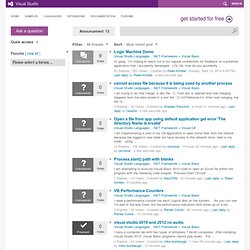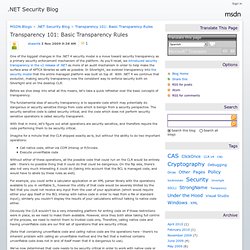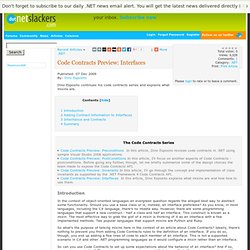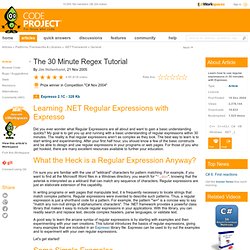

Creating documentation for a .NET component with Sandcastle Help File Builder. Contents Introduction Good documentation is an important part of a successful product.

Creating full and comprehensive description of functions and capabilities of a software product or component takes time and patience. In this article, I will discuss some practical aspects of creating documentation for .NET components. Let's assume that we have finished or almost finished creating a .NET developer library (developers are end users in this case). There are different approaches to writing documentation. I have used third-party tools and wrote documentation directly in the code, tried to start writing documentation before and after development is done.
Documenting the API The C# and VB.NET compilers are able to recognize comments, decorated in a special way (XML comments) and, if necessary, create an XML file which can then be used to generate the documentation. Public static int GetR(int abgr) { return (abgr & 0xff); } The creation of an XML file from the comments is disabled by default.
.Net Libraries. Singularity. PowerShell. Reflection. Databases. .Net Tools. .NET Development Forum. The updated StockTrader 5.5 sample is now available for download and setup.

This replaces the 5.0 release of StockTrader. The installer can be downloaded from or This new download includes the new Configuration Service 5.5 assemblies and ConfigWeb 5.5. Configuration Service 5.5 is backward compatible with 5.0 configuration repositories. You will want to rebuild solutions implementing Configuration Service 5.0 with the new 5.5 shared libraries. StockTrader 5.5 What's New The big change is support for Windows Azure SQL Database Federations. The single DAL layer works now against on-premises SQL Server (including SQL Server running in an Azure Virtual Machine); non-federated Windows Azure SQL Database, and federated Azure SQL Databases. Garbage Collection in .NET - How it really works. Garbage collection is a process of releasing the memory used by the objects, which are no longer referenced.

This is done in different ways and different manners in various platforms and languages. We will see how garbage collection is being done in .NET.Garbage Collection basisAlmost every program uses resources such as database connection, file system objects etc. In order to make use of these things some resources should be available to us. First we allocate a block of memory in the managed memory by using the new keyword. Use the constructor of the class to set the initial state of the object.Use the resources by accessing the type's membersAt last CLEAR THE MEMORYBut how many times have programmers forgotten to release the memory. These two are the serious bugs, which will lead us to memory leak and commonly occurring.
They implemented garbage collector as a separate thread. This memory is separated in to three parts : Generation ZeroGeneration OneGeneration Two Note: Dispose. Receiving notifications when garbage co. Fun With .NET Regex Balancing Groups. Wednesday, January 23rd, 2008 • Related • Filed Under The .NET Framework's regular expression package includes a unique feature called balancing groups, which is a misnomer since although they can indeed be used to match balanced constructs, that's not all they're good for and really has nothing to do with how they work.

Unfortunately, balancing groups are quite poorly documented. Following is a brief description of their functionality, but this post will mostly focus on examples of using them in interesting ways. Note: If you're reading this in a feed reader or aggregator, see the original post, which uses regex syntax highlighting to hopefully make things easier to follow. (?
I'm not a .NET coder, but I recognize the potential of this functionality. First, here's a simple example of using balancing groups outside the context of recursion and nested constructs. ^(? A few notes about the above regex: (? ^(? Basic Transparency Rules. One of the biggest changes in the .NET 4 security model is a move toward security transparency as a primary security enforcement mechanism of the platform.

As you'll recall, we introduced security transparency in the v2 release of .NET as more of an audit mechanism in order to help make the surface area of APTCA libraries as safe as possible. In Silverlight, we evolved transparency into the security model that the entire managed platform was built on top of. With .NET 4 we continue that evolution, making security transparency now the consistent way to enforce security both on Silverlight and on the desktop CLR. Before we dive deep into what all this means, let's take a quick refresher over the basic concepts of transparency.
The fundamental idea of security transparency is to separate code which may potentially do dangerous or security sensitive things from code which is benign from a security perspective. Call native code, either via COM Interop or P/Invoke. Call critical code. Code Contracts Preview: Interfaces. Dino Esposito continues his code contracts series and explains what mixins are.

The Code Contracts Series Introduction In the context of object-oriented languages an evergreen question regards the alleged best way to abstract some functionality. Should you use a base class or is, instead, an interface preferable? As you know, in most languages, including the C# language, there's no middle way. So what's the purpose of talking mixins here in the context of an article about Code Contracts? So can you use Code Contracts to set up some expectations about the behavior of an interface? Adding Contract Information to Interfaces.
The 30 Minute Regex Tutorial. Expresso 2.1C - 328 Kb Learning .NET Regular Expressions with Expresso Did you ever wonder what Regular Expressions are all about and want to gain a basic understanding quickly?

My goal is to get you up and running with a basic understanding of regular expressions within 30 minutes. The reality is that regular expressions aren't as complex as they look. The best way to learn is to start writing and experimenting. What the Heck is a Regular Expression Anyway? I'm sure you are familiar with the use of "wildcard" characters for pattern matching. In writing programs or web pages that manipulate text, it is frequently necessary to locate strings that match complex patterns. A good way to learn the arcane syntax of regular expressions is by starting with examples and then experimenting with your own creations.
Let's get started! Some Simple Examples Searching for Elvis Suppose you spend all your free time scanning documents looking for evidence that Elvis is still alive.